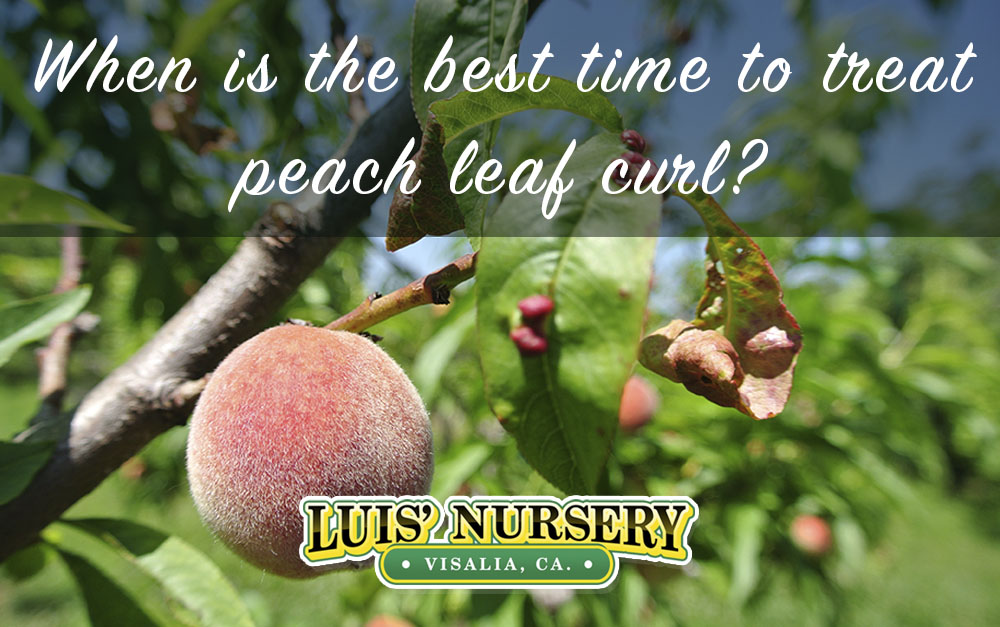If you have peach or nectarine trees, and a lot of people here in the Visalia area do, then you’re probably familiar with the dreaded peach leaf curl. It’s one of the most common diseases and can affect every bit of the tree from blossoms to fruit to leaves and shoots. If you haven’t had to deal with it yet, it’s a pretty sure bet you will have to at some time in the future. That’s why we’ve created this roundup of everything you need to know about preventing, treating and dealing with peach leaf curl to keep your tree happy, healthy and producing lots of yummy fruit.
What is peach leaf curl?
If you notice the leaves on your peach or nectarine trees develop a thick, distorted, warty texture with bright colors like orange, yellow or red, you have peach leaf curl. Infection can also show up on fruit, with raised wart-like growths on young fruit that often drop prematurely.
Peach leaf curl, also sometimes called curly blight or leaf blister, is considered the most common disease found in backyard orchards. It’s caused by a fungus that develops during cool, wet weather and infects leaf buds when they are first opening. You can’t see it right away, but symptoms start showing up when leaves begin to grow. The fungus causes the cells in the leaves to grow abnormally large, causes the distorted look. Then it develops spores to reproduce itself, which gives the leaves a velvety texture. They are then released into the air, spreading to other trees nearby. Wind, rain and irrigation helps spread the spores and continue the cycle.
When is the best time to treat peach trees for leaf curl?
As we head into wet winter weather conditions here in California’s Central Valley area, this is the best time to start treatments for your trees. Applications of a fungicide such as Liqui-Cop once per month in November, December, January and February will stop the fungus before it can affect the new leaves and cut down on the chance it will spread and affect other trees.
How do I get rid of leaf curl on my peach tree?
As we mentioned above, monthly applications of a fungicide developed to treat and prevent peach leaf curl is recommended for the winter months from November through February. Consistency is key, even if your trees look health, you must treat for this during the winter months or you might lose out on this season’s peach and nectarine crop.
In November, you want to apply the first treatment after leaf drop, probably right around Thanksgiving. The next 2-3 treatments can then be done about a month apart. Be sure to follow the product directions. Lighter treatments are usual if you haven’t experienced much infection previously, heavier applications if you are dealing with an outbreak.
In addition to using a fungicide such as Liqui-Cop, there are a few tasks that will help prevent the spread of peach leaf curl fungus.
- For all trees that are infected, clean up dropped leaves or fruit around the base of the tree and dispose so they don’t spread the fungus to other trees.
- Do not put fungus-infected leaves or fruit in your compost pile, as spores can remain dormant for quite some time and emerge the next season when you’re spreading your compost.
- Thin fruit during growing season to at least 3 inches apart to reduce the strain on your trees. Remove diseased or cracked fruit and dispose in trash, not compost.
Peach leaf curl is inevitable, but it doesn’t have to ruin your harvest. Simply mark the dates on your calendar, purchase a supply of Liqui-Cop here at Luis’ Nursery in Visalia, and keep an eye out for any signs of infection that can be removed immediately. That way you’ll keep the disease away and enjoy a bountiful harvest, year after year.

